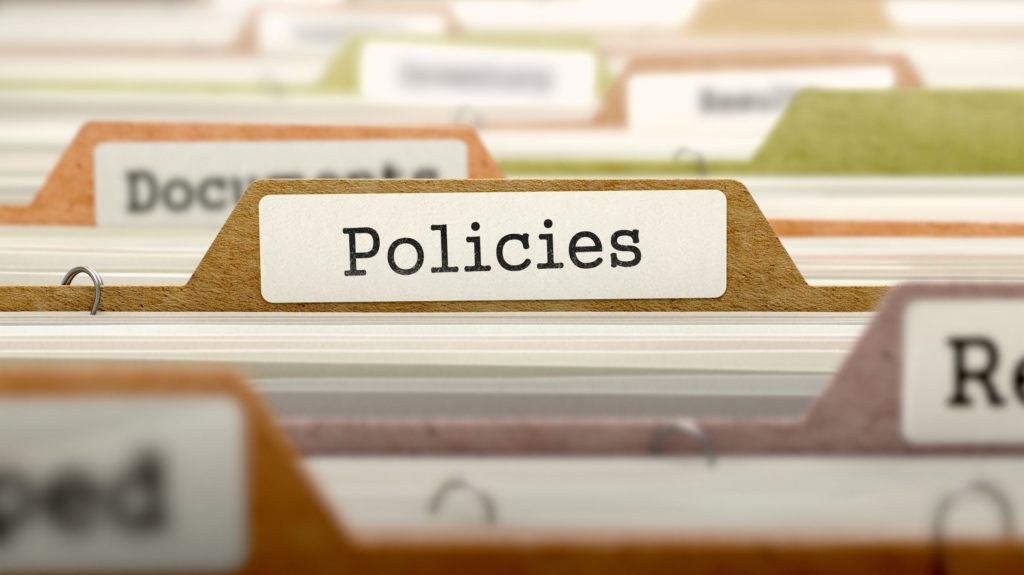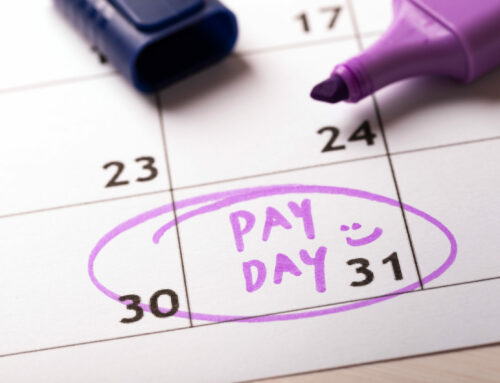
Nonprofit Accounting is something you must stay on top of for your new, young, or small nonprofit.
You DO NOT want to fool around with your Quickbooks data, your bookkeeping, or your financial reports. It’s serious stuff, folks.
Why?
Because bad things can happen if you do.
Listen, you don’t want to be red-flagged by the government because of a careless mistake you made on a report.
It’ll cost you time and money to go back and fix things once they’re broken. Spending resources to get it right the first time is a better idea.
And following best practices can keep you out of trouble and keep you working efficiently.
What is a Best Practice?
A best practice is a method of doing something that is widely accepted as correct or most effective. Keep in mind that it may or may not be what most other people are doing.
It’s not the same thing as common practice. Best practice is about doing something the RIGHT way, even if that means taking a little more time and a couple of extra steps to get it done.
When you get your nonprofit Accounting in line with prevailing best practices, you’re less likely to have problems with your finances, which is a good thing!
Here are 12 best practices in nonprofit Accounting that you should be using.
Best Practice #1: Expert Help
 For a small organization, especially one that’s in the startup phase, it’s important to get your books set up right from the get-go.
For a small organization, especially one that’s in the startup phase, it’s important to get your books set up right from the get-go.
Do-it-yourself is fine for home repair, but don’t try to do your nonprofit Accounting by yourself if you don’t know what you’re doing.
If you set up your chart of accounts wrong or enter data incorrectly, you’ll quickly have a mess. Calling an Accountant to clean up your mess can be costly and time-intensive. So, if you don’t know what you’re doing, get an expert to help you.
If you have a volunteer that wants to help, be SURE they have the skills to do it correctly. Volunteers are great help, but only if they have the skills for the job. If they don’t, well, there will be a cleanup on Aisle 9.
If you choose to use a volunteer to save some money as you’re getting started, be sure they set things up correctly. It’s worth paying for an hour of an Accountant’s time to review your setup before you start using your system.
Remember that you get what you pay for, and free isn’t always free in the long run.
Regardless of who sets up your nonprofit Accounting, YOU’RE accountable to your state and the IRS (if you’re inside the U.S.) or your government agency (if you’re outside the U.S.). The numbers and reports created by your system are what you’ll submit to the government, and you don’t want to worry about whether it’s right or not.
Think about it this way: You need to protect your volunteers. The last thing you want to do is set somebody up for failure who is giving of their time and resources to help the organization. It’s one thing to use a volunteer at a fundraising event or in a program, but it’s a whole other level of responsibility when you ask them to help with bookkeeping.
Even if you don’t have a whole lot of money, an investment in expert help early on will save you a lot of time and effort and maybe money later.
Best Practice #2: Controls and Risk Management
Controls are policies and procedures that are in place to ensure that financial tasks are handled correctly, especially things like:
- How donations are received.
- How donations are deposited into a bank account.
- How receipts are created.
Controls need to be in place to define every step of the process for handling funds and making sure that it’s systematic and understood by those involved, whether they’re employees or volunteers.
The point is to minimize risk and fraud. It’s critical for the organization to protect its integrity and reputation, but also to protect the people involved. With the right controls, you minimize risk for your team, removing temptation to steal.
You’d think staff and volunteers wouldn’t steal from a nonprofit, but it happens all the time. A few years ago, one of our clients discovered that their trusted Board Treasurer had been stealing money from the nonprofit. It was a few thousand here and there, and over several months, it added up to over $100,000. You may be thinking “how did that happen?” Well, there were no controls in place, no consistent financial reports to the Board, and no one taking a close look at the checkbook. The group trusted the Treasurer and no one felt the need to look over her work. It was a hard lesson for the small nonprofit to learn. If there had been multiple people involved in handling money, this wouldn’t have happened.
From opening the mail to preparing deposits to actually taking the deposits to the bank and entering everything in the system, you need more than one person involved and controls in place to minimize risk.
Best Practice #3: Written Policies
 Policies are the rules that guide your organization and you can’t be consistent in managing your nonprofit without them.
Policies are the rules that guide your organization and you can’t be consistent in managing your nonprofit without them.
Develop the policies you need around financial issues and put each policy in writing to keep everyone on the same page, make training new people easy, and provide benchmarks for keeping the organization on track.
You can either be proactive and document your policies now or you can wait until there’s a problem and it forces you to define and document policies. The risk of waiting is that you may have developed some bad habits that you’ll have to overcome. Plus you’ll have a mess to clean up.
You need policies for things like:
- Who is allowed access to financial information.
- Locking up cash.
- Cash handling at events.
- Depositing checks quickly.
I once had a client that said to me, “Oh my gosh! I cleaned my desk out and I found a check from six months ago.” She thought it was funny. I REALLY didn’t. It’s bad business, indicates you don’t really need the money, and most importantly, sends a bad message to your donor. A simple policy that states “Checks will be deposited within 48 hours of their arrival” could avoid that situation and prevent a mess.
So, take the time to get things documented now to save yourself a headache later.
Best Practice #4: Written Procedures
If policies are the rules that guide your nonprofit, procedures are the steps to getting tasks done inside those rules.
Procedures help make sure that things are being done consistently which is important when multiple people are involved.
For example, if you have more than one person entering data into Quickbooks, and they do it differently, it will be difficult (if not impossible) to get meaningful reports from the system. It’s absolutely essential that data is entered consistently for both reviewing recent activities and projecting future ones, including preparing next year’s budget.
If your nonprofit is really small (maybe it’s just YOU right now), it’s still important to put procedures in place so that YOU remember how things are done and so you can train new people when you’re ready to add them.
Best Practice #5: GAAP and IRS regulations (US-based nonprofits)
For U.S.-based nonprofits, Generally Accepted Accounting Principles (GAAP) and IRS regulations are critical to understand and use.
The average volunteer in the average nonprofit is not an expert on IRS regulations or GAAP. Both change from time to time, which makes them a moving target and difficult to stay on top of.
It’s not fair to expect the average volunteer to understand this inside and out and that’s why relying on an expert to help guide you is so important.
Just remember that the IRS doesn’t give you a pass simply because you don’t understand. There are very strict rules regarding how you record revenue, how you record expenses, and in what categories that you count them — especially when dealing with restricted funds.
Again, it’s really worth spending a little money to get some expert help so you don’t get into trouble later.
Best Practice #6: Regular Financial Reports
Every nonprofit, no matter its size, should keep a really close eye on its finances.
After all, you can only manage it if you measure it. And that’s particularly true of money.
 Both the organization’s director AND the Board of Directors should be taking a monthly look at financial reports to see what came in, what went out, and how those numbers compare to the budget.
Both the organization’s director AND the Board of Directors should be taking a monthly look at financial reports to see what came in, what went out, and how those numbers compare to the budget.
Look at:
- This month’s expenses and revenue actuals compared to budget.
- Year-to-date expenses and revenue actuals compared to budget.
- This month’s expenses and revenue compared to this same month last year.
Reviewing these numbers will help you keep a tight handle on how you’re doing financially. And it’s also one of the basic responsibilities for your Board to make sure the nonprofit is financially sound.
It’s common for Boards of really small and new nonprofits to think “there’s not much to look at” and brush this off. But remember that how you begin is how you continue. If you don’t take it seriously NOW, chances are good you won’t take it seriously later. So, best to start reviewing financial reports early on.
Even if individual Board members think “I’m not a numbers person,” that doesn’t let them off the hook. The Board is responsible for leading the nonprofit and can be held legally liable if something goes wrong.
It’s worth providing training for your Board in understanding how to read your nonprofit’s financial statements so everyone knows what they’re looking at.
Best Practice #7: Knowledgeable and Capable Bookkeeper
It’s critical that you have a knowledgeable and capable bookkeeper, whether it’s a volunteer, contractor, or paid staff person.
If this person doesn’t know what they’re doing, they can make a mess and cause important documents to be wrong, like your annual filings to your state or your Form 990 (or other documents based on the country you’re in).
If you’re like most small nonprofits and you struggle to find a Board member or volunteer who understands Accounting, it can make you desperate to get anyone to say “yes” to taking on the bookkeeper role.
As long as you have an expert that can help set up the system and train this person, you’ll be ok.
Best Practice #8: Detailed Organizational Operating Budget
 Regardless of the size of your nonprofit, you need an operating budget.
Regardless of the size of your nonprofit, you need an operating budget.
Budgets are a great tool to manage both income and expenses so you know what you have now and what you can expect in the coming months.
Without a budget, you’re basically flying blind and making decisions based on the amount of money in the checking account, which is NOT a good idea. You can’t strategically plan for the future without one. You have no idea if the amount of money you brought in this month was what you need, more than what you need, or fell short.
Take the time to put together a budget for your coming fiscal year. If it’s your first budget, expect to spend a little time getting it right. Just remember, it will be time well spent.
Best Practice #9: Rainy Day Fund
Your nonprofit should have a Rainy Day Fund set up to provide emergency funds should you need them.
Think of it as a savings account for your organization that you can tap into if you hit a tough time financially.
How much you keep in your Rainy Day Fund is up to your team and is a good topic for a Board discussion. Some nonprofits keep enough to cover 3 months’ worth of expenses. Others keep 6 months’ worth of expenses.
Set up a savings account and put your Rainy Day Fund money in there so the funds are literally separate from your operating funds.
The economy goes in cycles. There WILL be times of feast and there WILL be times of famine. If you aren’t preparing for the bad times, you’re courting disaster, which isn’t smart.
Best Practice #10: Credit Cards and Debt Management

Is it okay for a nonprofit to have a credit card? Yes.
Credit cards can serve multiple purposes for your nonprofit:
- Safer to use than debit cards (you should really NEVER use a debit card!)
- Easy to see what money was spent during the month.
- Great for staff to use for minor purchases instead of them paying out of pocket then the nonprofit reimbursing them.
- Good for investing in fundraising training, books, and coaching since professional development should increase your capacity to raise money, making it easy to pay the credit card off.
Be sure to put policies in place about who can use the nonprofit’s credit card, how much can be spent, how receipts will be kept/turned in, and how the amount charged will be managed.
You and your Board should decide together how much credit card and other debt you’re willing to have on your books. Don’t forget that credit card interest is usually fairly high, so think about how fast you want to pay the card balance off (shoot for monthly). You don’t want donations paying for credit card interest if you can help it!
Before you get a credit card, see if a local bank is willing to work with you to give you a good rate and help with all your accounts–including your checking account, a Rainy Day fund, a credit card, and more. They might also be willing to sponsor your event or provide volunteers.
Use debt wisely, especially for large purchases like a vehicle or building. You’re committing the nonprofit to repayment for many years.
Best Practice #11: Separation of Personal and Nonprofit Funds
Keep your personal funds and the nonprofit’s funds separate. This is critical!
If you plan to use a credit card, get one in the nonprofit’s name. DON’T use the Founder’s or Director’s personal credit card for nonprofit expenses. This is called ‘commingling of funds’ and both the IRS and your State Attorney General’s office frown on it. It’s okay for someone to charge a nonprofit expense on their personal card and get reimbursed for it occasionally (especially if you have a reimbursement form and a process). Just don’t make a habit of it.
You’ll need a policy stating that volunteers and staff may NOT use the nonprofit credit card for ANY personal purchases. Sometimes a Founder thinks it’s okay for them to charge personal items on the nonprofit card and reimburse the nonprofit later. Just don’t. This creates a very messy situation that can go from bad to worse in a flash.
Any time someone spends organizational funds on a personal purchase, it automatically creates a de facto loan to that individual. The reality is most states prohibit lending from an organization to their key staff or directors. In the State of Tennessee, it’s against the law for an organization to lend money to an officer or a director of that organization. And you create an implicit loan anytime that you’re using organizational funds for personal use. So, don’t do it.
Keeping personal and nonprofit funds separate gets really tricky if your nonprofit offices are at your home or if you use personal property, like a barn, for nonprofit programs.
Let’s say you use your personal farm to start a horse rescue. You have your personal horses in some stalls and rescue horses in other stalls. If a donor gives you money to purchase hay, you CANNOT use that hay to feed your own horses. You must keep everything separate. It’s a good idea to literally keep hay that belongs to the rescue in a separate place away from your own personal hay to minimize confusion for you and any volunteers helping you.
If you use donor money to buy a laptop for the nonprofit, the laptop is the nonprofit’s property, even though you’re using it. If you use donor or grant money to purchase a vehicle for your nonprofit, the vehicle belongs to the nonprofit and should not be used to run your personal errands.
Best Practice #12: Account for Donated Time and Materials
 In addition to money, people will give their time and material goods or services. You need to account for them correctly.
In addition to money, people will give their time and material goods or services. You need to account for them correctly.
Keep up with the number of volunteer hours served so you can properly thank volunteers and report to the community how much time was donated. Use the Independent Sector’s value of a volunteer hour (https://independentsector.org/resource/vovt_details/) and multiply it times the number of volunteer hours to show the value of donated time you’ve received.
For donated materials and donated services, ask the donor to supply you with the value of those items. You cannot determine the value for them – they must do it.
Once you have the value of donated time and materials, include it in your operating budget so you have a clear picture of what it truly costs you to run your nonprofit. Add lines to the revenue side for “Donated volunteer time” and “In-kind donations” then repeat those on the expense side of your budget.
Including these lines on both the revenue and expense portions of the budget cancel each other out and basically only impact the bottom line, increasing it by the amount of these donations. It’s important because it gives you a better idea of what your budget would look like if you had to pay for those items.
The Bottom Line
People expect you to run your nonprofit well, especially when it comes to handling money. They want to trust that they made a good decision to give to you and your job is to reassure them that they did.
Follow these 12 best practices and you’ll be on your way to staying out of trouble and building trust with donors and the community.





Leave A Comment